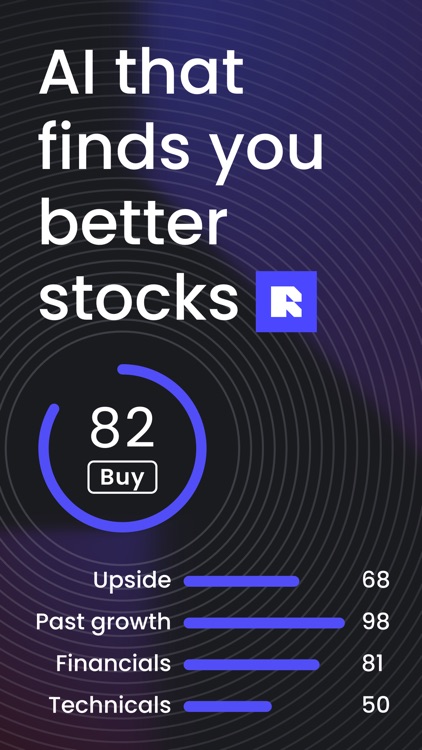The market coverage of the trading platforms for AI analysis of stocks is vital because it defines the markets and assets you are able to access. A platform that offers comprehensive market coverage allows you to diversify portfolios and discover global trading opportunities and adapt to different strategies. Here are the top 10 tips for evaluating the market coverage offered by these platforms.
1. Evaluate Supported Asset Classes
Stocks: Make sure that the platform includes stocks from all major stock exchanges, including NYSE, NASDAQ and LSE.
ETFs Check whether the platform lets you pick from a variety of ETFs that can provide you with a variety of exposure.
Options and futures. Find out if your platform offers derivatives, such as options, futures or other instruments leveraged.
Forex and commodities: See whether your platform has commodities and forex, precious metals, and energy commodities.
Cryptocurrencies - Make sure to check if your platform supports the major copyright like Bitcoin, Ethereum and altcoins.
2. Check for Coverage Area
Global markets: Ensure the platform covers major international markets, such as North America, Europe, Asia-Pacific, and emerging markets.
Make sure you focus on regional markets. Find out if a platform is focused on specific particular markets or regions that align to your business goals.
Local exchanges. Determine whether the platform supports local or region exchanges, pertinent to your location or business strategy.
3. Consider comparing real-time data with delayed data delayed data
Real-time Data: Make sure that your platform is equipped with real-time data for trading and for making timely decisions.
Data that has been delayed: Check whether delayed information is available at no cost or a discounted price, which could suffice for investors with a long-term view.
Data latency: Verify whether the platform is able to reduce latency in real-time feeds of data especially for high-frequency trading.
4. Evaluate Historical Data Availability
In depth of Historical Data The platform provides extensive historical data to backtest, analysis and testing (e.g. 10+ years).
Look for any granularity. Historical data may include intraday, daily and weekly level of granularity.
Corporate actions: Confirm that historical data takes into consideration stock splits (if relevant) dividends, stock splits and any other corporate actions.
5. Verify the Order Book and Market Depth Information
For better price discovery make sure that the platform has Level 2 data.
Verify the bid-ask ranges in order to confirm the accuracy of pricing.
Volume data: Ensure that the platform provides specific volume data that can be used to study market liquidity.
6. Examine the extent of coverage for Indices and Sectors
Major indices: Check that the platform covers major indices (e.g., S&P 500, NASDAQ 100, FTSE 100) to benchmark and index-based strategies.
Sector-specific data : Determine if your platform has data specifically for certain industries (e.g. healthcare, technology, energy) so you can perform targeted analysis.
Custom indexes. Verify that the platform allows you to create and keeping track of custom indices that meet your needs.
7. Assess the impact of integration with News and Sentiment
News feeds - Ensure that the platform has integrated real-time news feeds that contain news that are market-moving from reliable (e.g. Bloomberg or Reuters) sources.
Sentiment analysis: Find out if there are tools for sentiment analysis based on news articles or other data sources.
Event-driven strategy: Make sure that the platform supports the use of event-driven trading strategies (e.g. announcements of earnings economic reports, announcements of earnings).
8. Verify Multi-Market Trading Capabilities
Cross-market trading: Make sure the platform allows trading on different asset classes, markets and exchanges through an interface that is single.
Conversion of currency: Make sure your platform allows multi-currency trading and automatic currency conversion.
Time zone support: Check if the platform accommodates trading in multiple time zones that are used for trading on global markets.
9. Evaluation of Alternative Data Sources
Alternative data: To gain unique insights, check if the platform incorporates other data sources.
ESG data - Check that the platform is able to provide environmental, governance, and social data (ESG). This is crucial for an investment that is socially conscious.
Macroeconomics data: for a more basic analysis, ensure that the platform contains macroeconomic indicators, such as GDP (gross domestic product) inflation rates, GDP and interest rates.
Review customer feedback and reputation of the market
User reviews: Read user feedback to gauge the market coverage of the platform and its the reliability.
Industry reputation: Check whether the platform is regarded for its market coverage by industry experts or by awards.
Case studies and testimonials They will showcase the platform's performance in specific asset classes or markets.
Bonus Tips:
Trial period: Use a free trial or demo to test the platform's market coverage and data quality.
API access: Verify that the API is available on the platform that allows you to programmatically access market data to perform custom analysis.
Support for customers: Make sure whether the platform offers support for queries related to markets or data.
Use these guidelines to assess the market coverage provided by AI stock trading platforms. Select a platform that has access to the market, data and tools you need to make trading successful. Comprehensive market coverage lets you to diversify your portfolio and discover your portfolio. It also assists you adjust to changes in the market. Follow the top rated best copyright prediction site url for site tips including ai stock trading bot free, best ai stocks to invest in, ai trading bot, ai investing app, trading with ai, trading ai bot, best ai copyright trading bot, ai copyright signals, best ai stocks to buy, ai stock price prediction and more.

Top 10 Tips For Evaluating The Feasibility And Trial Of Ai Analysis And Stock Prediction Platforms
Before committing to long-term subscriptions It is crucial to assess the trial options and potential of AI-driven prediction and trading platforms. Here are the top 10 tips to consider these factors.
1. Get an opportunity to try a free trial
Tip: See whether there is a trial period available to test the features and capabilities of the system.
Free trial: This gives users to test the platform with no financial risk.
2. Duration and Limitations of the Trial
Tip: Review the length of your trial, as well as any limitations you might encounter (e.g. limitations on options, or access to information).
Why? Understanding trial constraints will help you determine if the evaluation is thorough.
3. No-Credit-Card Trials
Find trials that do not require credit cards upfront.
Why: This reduces any risk of unforeseen charges and makes the decision to leave easier.
4. Flexible Subscription Plans
Tips. Find out whether a platform has a flexible subscription plan (e.g. annually or quarterly, monthly).
Flexible Plans permit you to select a level of commitment that is suitable for your needs.
5. Features that can be customized
Tips: Make sure that the platform you are using permits customization for alerts, risk settings and trading strategies.
It is crucial to customize the platform as it allows the platform's functionality to be tailored to your own trading needs and preferences.
6. It is very easy to cancel a reservation
Tip: Find out the ease it takes for you to downgrade or end an existing subscription.
The reason: In allowing you to cancel without any hassle, you'll be able to avoid getting stuck in the wrong plan for you.
7. Money-Back Guarantee
TIP: Find platforms that offer a guarantee of refund within a certain time.
What's the reason? It's an additional security step in the event your platform does not live up to your expectations.
8. Access to all features during Trial
Tip: Make sure the trial version gives you access to all the features and not just a limited version.
You'll be able make better decisions when you have a chance to test the full functionality.
9. Customer Support for Trial
Visit the customer support throughout the trial time.
Why is it important to have dependable support so you can resolve issues and make the most of your trial.
10. After-Trial feedback Mechanism
Find out if your platform is soliciting feedback for improving services following the trial.
Why The platform that takes into account feedback from users is more likely to grow so that it can meet the requirements of its users.
Bonus Tip! Scalability Options
Make sure that the platform you choose to use can grow with your trading needs. It should offer higher-tiered options or features as your activities increase.
Before making any financial commitment, carefully evaluate the trial and flexibility options to decide whether AI stock trading platforms and predictions are the right choice for you. Take a look at the best ai copyright signals hints for blog advice including ai trade, best ai stocks to invest in, stocks ai, ai for stock trading, chart analysis ai, ai investing app, best ai copyright trading bot, investment ai, incite ai, using ai to trade stocks and more.

 Rider Strong Then & Now!
Rider Strong Then & Now! Bradley Pierce Then & Now!
Bradley Pierce Then & Now! Michael Jordan Then & Now!
Michael Jordan Then & Now! Danny Pintauro Then & Now!
Danny Pintauro Then & Now! Atticus Shaffer Then & Now!
Atticus Shaffer Then & Now!